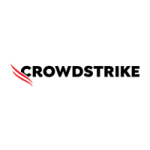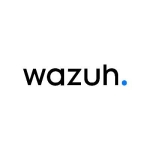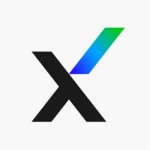What is our primary use case?
My use case for the solution is primarily for EDR purposes, but we are also starting to use the CREM. This technology allows us to see our endpoints within seconds to ensure they are NIST 800-83 compliant. This technology is critical in today's world as there are many customers requiring this now.
How has it helped my organization?
We have used advanced threat intelligence, and we continue to do so. There is a way to run a threat query to find where a certain item is located. For example, Quick Assist from Microsoft was used a while back to gain access to our environment, and we didn't know it at the time. Of course, we've since locked that down. Now, we can also use that query we created to monitor if someone tries to use it again. I recently saw an attempt to use it, but they couldn't succeed because we have it blocked. It's really good to know these things, and without the available technology, we wouldn’t be able to do this.
Trend Vision One's automation capabilities have helped, for example, with atypical travel. We have a playbook set up. When Trend Vision One finds someone signed on in the United States and then catches them signed on in Africa, it will immediately run a playbook. This will disable that profile and prohibit that person from logging in. That is huge when you consider the possibilities of what could happen if we didn’t have that feature.
Our response time is greatly enhanced because of all the features that Trend Vision One offers. It simplifies things and makes it clear what’s going on inside our environment. With just a click of a button, we can get the information we need. We can mitigate issues very quickly using Trend Vision One. We can isolate endpoints, effectively removing them from the network while still accessing them through the Trend Vision One console. Additionally, we can run malware scans instantly on computers, and there are so many features available that it can be hard to keep track of them sometimes. Overall, Trend Vision One has really helped a lot. When it comes to time savings, I would estimate that our response time has improved by at least 40%.
Using this solution has benefited our business greatly. It keeps me informed of everything happening in our environment. We have site admins at every location with specific admin authority to do certain things. Trend Vision One monitors that, allowing me to validate actions taken by admins. Trend Vision One caught various incidents, and it gives me a clear understanding of our environment and its activities, with quick searches and deeper capabilities.
What is most valuable?
With Trend Vision One, my favorite feature is the app they provide. You can turn on different features and notifications. The other night I was sitting at supper when the app went off, and I got an alert that was very strange. It turned out to be an event, and we got our cyber team together to mitigate the issue with Trend's IR Teams help, preventing any major problems. That app is a lifesaver.
The dashboard provides extensive information. It gives detailed information regarding endpoints and servers, tracking everything. You can search for things and run threat analysis. There are many features within there, and it's difficult to pinpoint one because all the features work very effectively together.
The centralized management feature contributes to faster decision-making within our security operations, greatly enhancing our response time. With all the features that Trend Vision One offers, it simplifies things. It clarifies what's going on inside your environment; with a click of a button, you can see what's happening and mitigate very fast.
What needs improvement?
In Trend Vision One, there is always room for improvement. The console is well done, but there might be a bit of improvement needed with the app's capabilities. I know they are constantly working on it, and they have regular Webinars "What's New In Trend Vision One" to share updates and enhancements that are taking place.
Trend also allows its VIP customers to pretest new features or products and enables us to give feedback on those we test. This is an incredible benefit to Trend's VIP program. I do not know of any other product like Trend Micro.
Buyer's Guide
Trend Vision One
September 2025
Learn what your peers think about Trend Vision One. Get advice and tips from experienced pros sharing their opinions. Updated: September 2025.
869,785 professionals have used our research since 2012.
For how long have I used the solution?
I've been using this solution for quite a while. It was about eight years ago when our company had Trend implemented at every location. We have eleven locations overall. In my opinion, it wasn't managed properly; the situation was quite poor. There were many updates that were needed. I approached management and expressed my desire to take over the project. I said, "I want this. I will do it, fix it, and make it work." Management agreed and gave me the responsibility.
What I did next was take all the servers, fix and upgrade them, and prepare them for migration to one on-site server. After that, we decided to move to the cloud. I gathered everything together and worked with Trend to get all of our endpoints and servers transitioned to the cloud. It's been an ongoing process with Trend, as there is always something that needs to be done.
What do I think about the stability of the solution?
I rate the stability of Trend Vision One as a ten out of ten.
What do I think about the scalability of the solution?
I would rate the scalability of Trend Vision One as nine out of ten.
How are customer service and support?
It is really good. They even have a feedback system to report suggestions or problems, which are addressed promptly. We also benefit from 24/7 monitoring, and we have direct contacts for technical issues and ongoing weekly support calls.
I would rate them a nine out of ten. There's always room for improvement. Five years ago, I would rate it as a five, but support has significantly improved in availability, responsiveness, and keeping me updated.
How would you rate customer service and support?
How was the initial setup?
We purchased the software through CDW, which used to be called Sirius. That's how we acquired it. I have several contacts at Trend that I can reach out to directly, as I have been working with them for about eight years. They have helped me implement the software directly. I worked with Trend through the entire process. They have a learning platform with videos that break down each product. They show you step-by-step how to implement or use each solution. Trend Micro Service One, monitors our corporation, 24/7/365 support service. We can contact a representative, and they’ll get back to us if we encounter any problems or technical issues in our environment. They’ll even join us on a conference call to help. We also have a weekly call with them, where we can ask questions, and they guide us to the right resources and documentation. It’s really an incredible support package.
It wasn’t complicated to deploy. Now they offer a product called Server and Workload Protection, which is tailored specifically for servers. We're in the process of upgrading our servers to use this product. It’s more focused on server-specific security and functionality. When I used it about five years ago, the process was quite complex. I had problems and issues. Over the years, we moved away from the product — about four years ago — and we’re only now starting to return to it. The changes made in those four years are incredible. It’s like night and day. What used to take me days to deploy to one server now takes about half an hour. Trend is constantly updating, enhancing, and improving how things are done. It’s a continually evolving package. They’re even integrating AI capabilities now, which will greatly enhance what Trend products can do.
The capability of Trend Vision One to be deployed both on-premises and in the cloud has been extremely beneficial to my organization in terms of flexibility and scalability. Being in the cloud eliminates the need for on-prem servers. With several divisions, managing all of those on-prem servers was a nightmare. It was not an option, so I migrated to the cloud, which is a one-stop shop. We have our entire corporation in the cloud, making it easy to see everything without logging onto multiple servers; this saves a lot of time.
The solution itself does require some maintenance. The updates are automatic, so we don't need to manually check. However, some endpoints have to be maintained more carefully, ensuring they are fully updated because missing MS updates can prevent Trend Vision One from working correctly. It's good practice to keep everything up to date, which is crucial for managing over 1,000 endpoints and 200 servers. Trend Vision One allows us to see all software on a person's computer, even outdated web browsers, and it flags potential threats, which is an incredible feature.
What about the implementation team?
In my organization, approximately three people work with Trend Vision One.
What was our ROI?
In terms of return on investment, I've seen a 100% return. It has paid for itself. Our company went through a ransomware event, and if Trend Vision One's IR Team had not stopped it, that could've closed the company's doors.
What's my experience with pricing, setup cost, and licensing?
Trend Vision One is definitely cost-efficient compared to other solutions. I have seen others that are double or triple the price. I'm surprised Trend Vision One hasn't raised their prices, considering everything offered. Depending on the features selected, cost varies, but overall, endpoint and server security is very reasonable.
Which other solutions did I evaluate?
Comparing Trend Vision One to other solutions, I've seen other vendors with complicated software requiring extensive training to understand. If software is that hard to learn, I don't find it to be a viable solution. Learning takes weeks or months, potentially creating holes in security instead of securing it.
What other advice do I have?
I would absolutely recommend Trend Vision One to other users because it's cost-efficient and it just works. It tells you what you need to do, alerts you of threats, and informs you about software needing updates. They have an IR team that is exceptional and works on the mitigation and remediation until all issues have been resolved! Over time, it becomes easier to understand, especially moving from on-prem to cloud deployment; there's no comparison.
I would rate the solution overall as a ten out of ten.
Which deployment model are you using for this solution?
Public Cloud
Disclosure: PeerSpot contacted the reviewer to collect the review and to validate authenticity. The reviewer was referred by the vendor, but the review is not subject to editing or approval by the vendor.



















